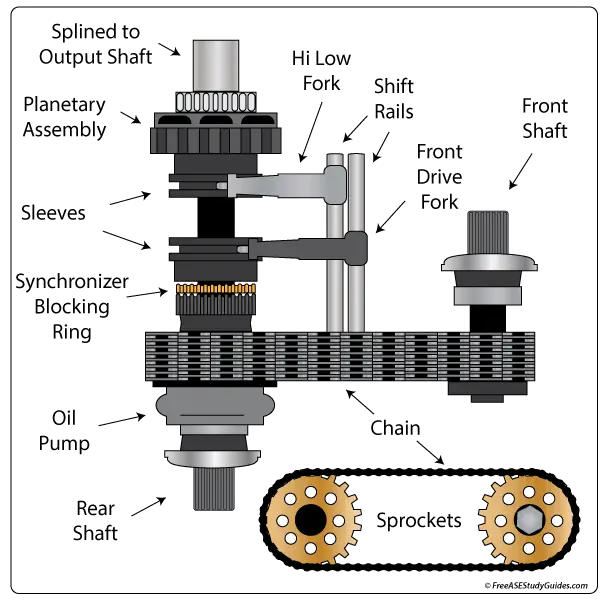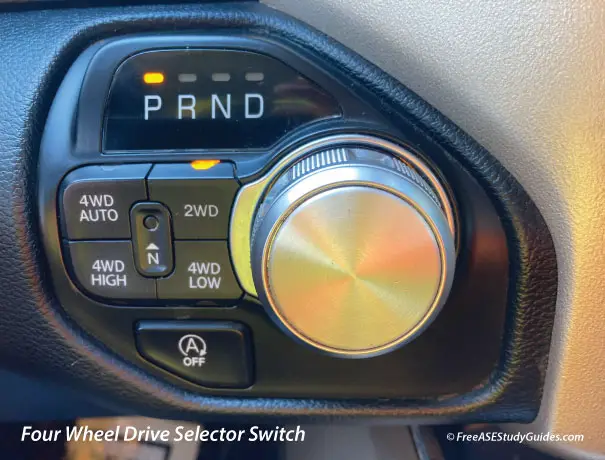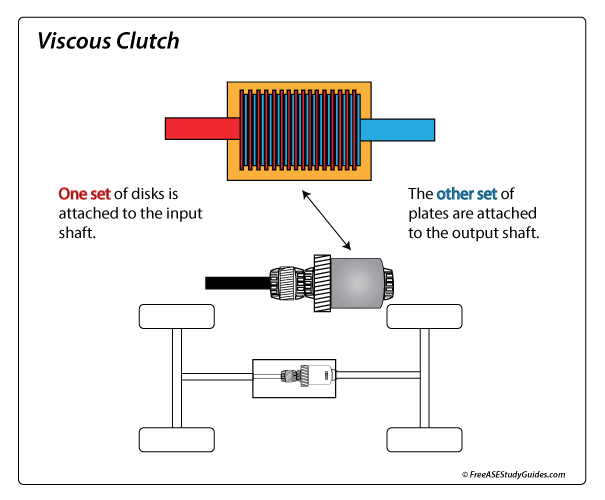Transfer Case
A part-time transfer case receives power from the transmission and transfers it to the vehicle's two or all four wheels. This enables the driver to place the vehicle from 2WD into 4WD (four-wheel drive) by moving a gear selector, pressing a button, or moving a slide. The case can be independent of the transmission or joined, where it may share the same case. The most common transfer case is independent. An independent transfer case attaches to the output shaft of the transmission. It has a driveshaft for the front and rear axle.

They can either chain or gear-driven. Many manufacturers today use chain-driven transfer cases because they're lighter and quieter than their gear-based counterparts. However, gear-driven transfer cases have more strength and are found in heavy applications. Transfer cases usually use ATF, but check with the manufacturer's specifications before servicing the fluid.

A vacuum-controlled unit requires a specified vacuum from the engine (17-21 "hg). Check all the lines and reservoirs for cracks and wear if a low vacuum is found in the vacuum line. They're also controlled manually, hydraulically, or electrically. Manual control is typically a shifter found on the floor of the vehicle. An electronically controlled transfer case contains a control module and a series of buttons or slides found on or around the instrument panel. A hydraulic pump and a clutch pack operate a hydraulically controlled transfer case. An AWD (all-wheel drive) system's viscous clutch contains thick fluid.

AWD (all-wheel drive) vehicles remain in four-wheel-drive at all times. These are full-time four-wheel-drive systems that operate transparently to the driver. They're designed to handle bad weather or light terrain but are not considered off-road vehicles. The high range of an AWD vehicle is typically 1:1; for every turn of the output shaft, there is one turn at each axle shaft.